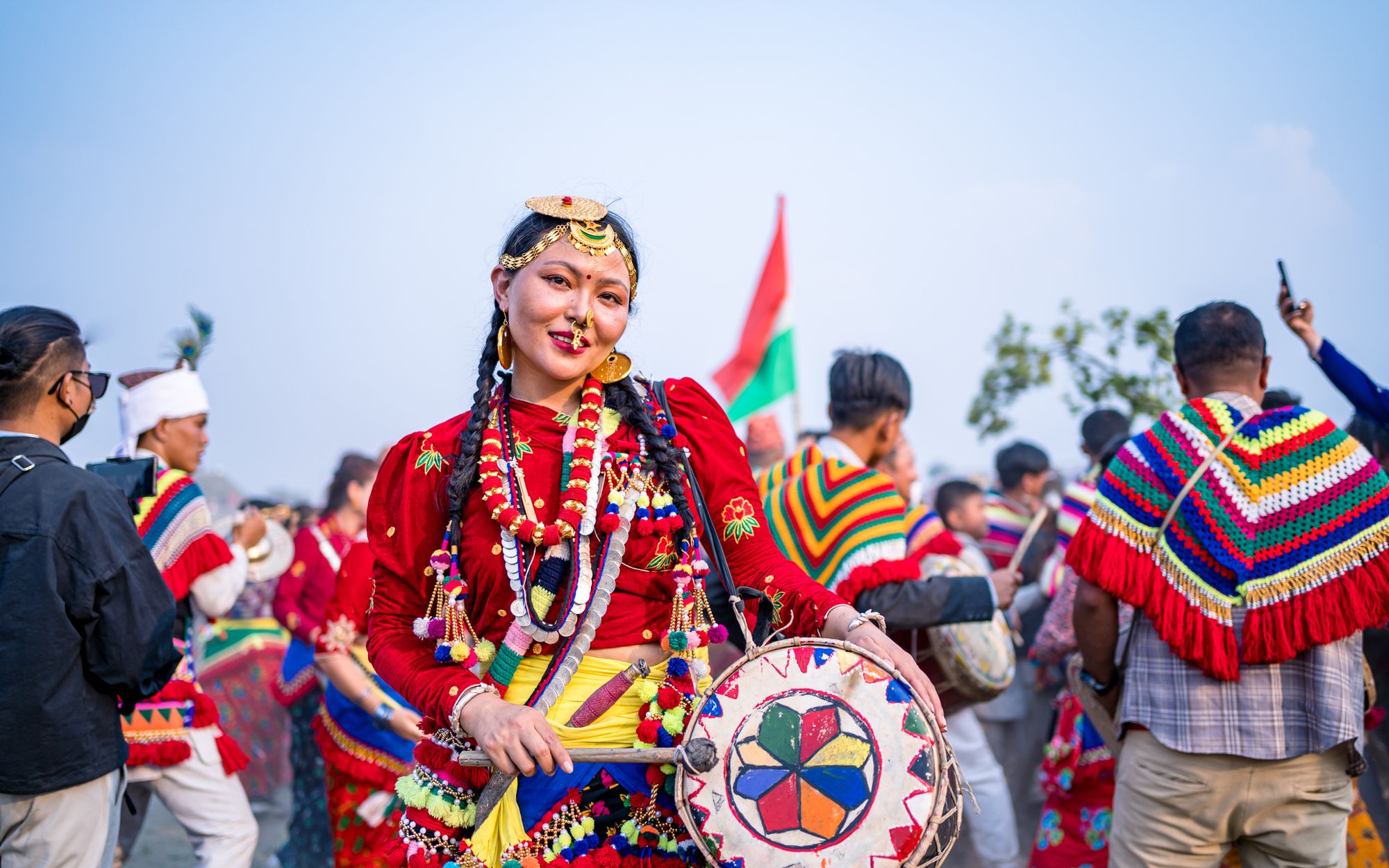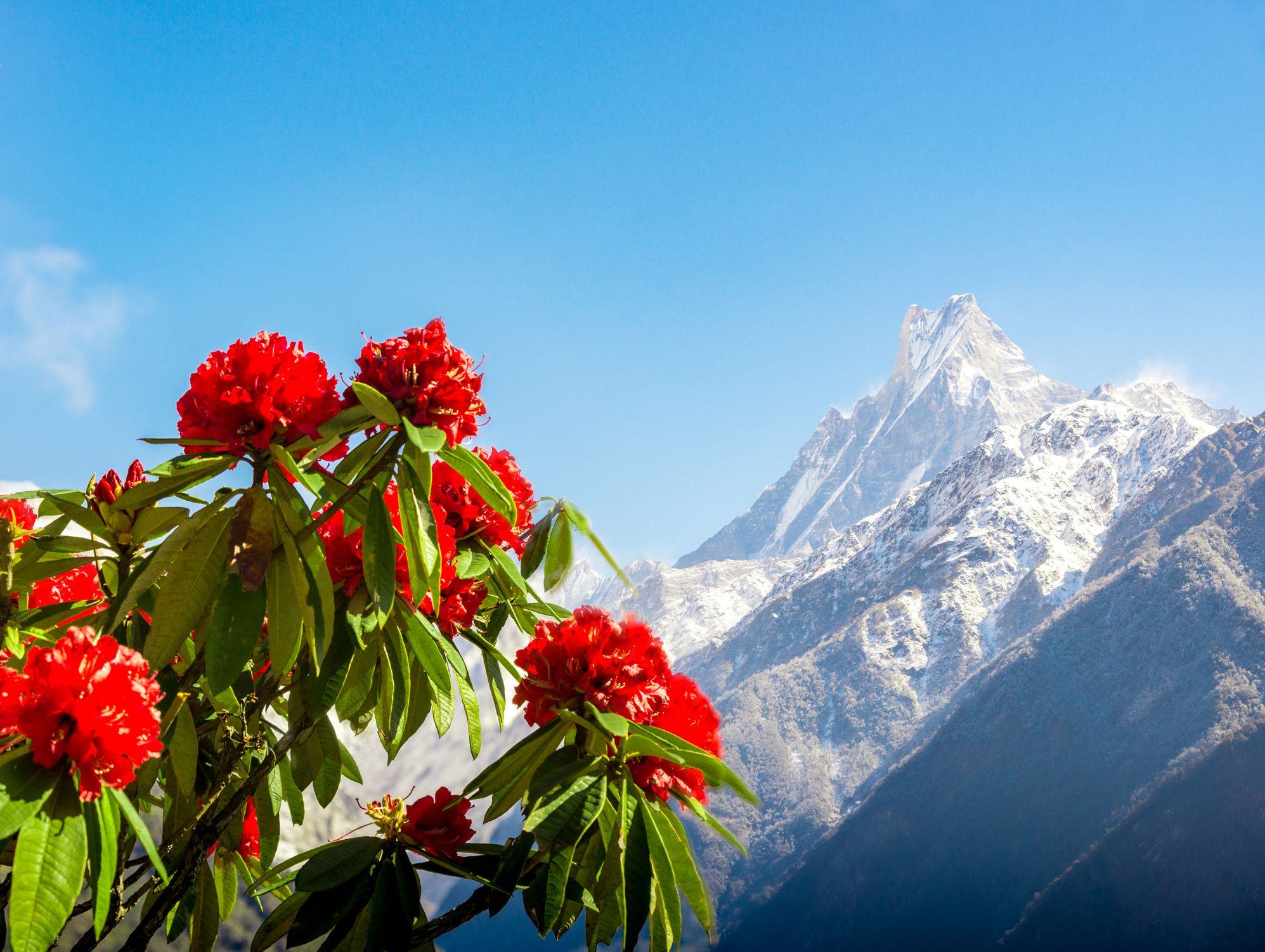What makes Nepal worth visiting?

Introduction
I flew in early, dawn was at its earliest with a little morning rays that narrowly escaped and lit up valley and the edges of mountains with its golden rays. It was a refreshing look as the plane prepared to land at the Tribhuwan International Airport. As I took my first step out, The fresh air and the greenery born of the hills and the trees came together to welcome me with open arms. I was excited to delve into centuries of grand design and sculpture mingled in the wide avenues to form that eclectic yet peaceful cityscape.
Nepal is known as a land of rich socio-cultural heritage. From Pagoda's architect to trails among the Himalayas, this little country has to offer more than one can think of. Whether it be a tallest peak in the world or whether it be a diverse wildlife.
You would think, it would end there but being a holy place for Hindus and Buddhists, the list is quite never ending. But if you ever happen to land your feet in this tiny world, Be sure not to miss some of the must visited place on Nepal.

- Historical Sites
Nepal has a rich history and cultural diversity. These historical sites embodies the tales of civilizations, cultures and significant events, that stands as testaments to its rich heritage. Whether it's the intricately carved temples of Patan and Bhaktapur or the palaces of Gorkha and Palpa, these sites serve as living museums. We can see the glimpses of the artistic mastery of architectural brilliance and the stories of monarchs and civilizations that once flourished within these majestic structures.
From the ancient palaces and temples of Kathmandu, Bhaktapur and Lalitpur to the serene birthplace of Buddha in Lumbini and Ram Janaki Temple, here are top 15 pilgrims sites that summarizes Nepal’s diverse heritage, tales of craftsmanship, spirituality and the illustrious history of Nepal, inviting visitors on a captivating journey through time and tradition.
1. Bhaktapur Durbar Square
2. Boudhanath
3. Changunarayan Temple
5. Kathmandu Durbar Square
6. Patan Durbar Square
7. Swoyambhunath
8. Lumbini
10. Sagarmatha National Park
11. Ram Janaki Temple
12. Muktinath Temple
13. Hanuman Dhoka
14. Taleju Bhawani Temple
- Fiftyfive-Window Palace

As the saying goes, If you want to explore people, explore their food first. The cuisine of Nepal is a fusion of flavors and traditions. Nepal is blessed with natural beauty but its culinary journey is equally interesting with the mixture of unknown spices, taste explosions and new favorite dishes you have never tasted in your life. From spicy food to savory and sweet dishes, Nepal has it all. The variety of dishes from different cultures makes Nepal an absolute heaven for vegans, vegetarians and meat lovers.
Below are top 15 dishes apart from mo:mos and dal bhat tarkari that you must try in Nepal, if you are a true foodie!
- Thakali Khana Platter
- Dhido
- Samay Baji
- Aalu Tama
- Sel Roti
- Gundruk
- Choila
- Chatamari
- Gwaramari
- Kheer
- Lakhamari
- Gudpak
- Malpua
- Yomari
- Tongba

- Cultural Diversity
Nepal is the only country in the world where 125 distinct ethnic groups and people following 10 different religions are residing in harmony. Although the largest population of Nepal are Hindus, Nepal is actually a secular country. The religions followed in Nepal are Hinduism, Buddhism, Islam, Kirat, Christianity, Prakriti, Bon, Jainism, Bahai and Sikhism. The culture of Nepal is expressed through music and dance, art and craft, folklore, languages and literature, philosophy and religion, festivals and celebration, food and drinks. All around Nepal, about 123 different languages are spoken. With a mosaic of ethnic groups, each with its own traditions, languages, customs and practices, here are some of the major ethnic groups in Nepal.
- Khas/Aryan are the largest ethnic group settled in the hills and valleys.
- Newars are centered mainly in the Kathmandu Valley.
- Tharus are indigenous to the Terai Region.
- Tamangs are mainly in the hills surrounding the Kathmandu Valley and Northern districts.
- Rais and Limbus reside in the eastern hills of Nepal.
- Gurungs and Magars are living mainly in the western Hills.
- Sherpas are predominantly residing in the High Himalayas and are renowned for their mountaineering skills.
These ethnic groups represent just a fraction of the diverse cultural landscape of Nepal. Each community contributes to the nation’s rich tapestry of traditions, languages, cuisines, arts and festivals, making Nepal a vibrant and culturally rich nation.

Unlike any other nations that follow the Gregorian Calendar (AD), Nepali calendar follows Bikram Samvat (BS) while the Newari community follows Nepal Sambat. According to the Nepalese Calendar, it is 2080 BS, which is equivalent to 2023 AD, correspondingly in Nepal Sambat, it is 1144. Nepali Calendar has a different starting and ending point and is based on a lunisolar calendar constructed on the phases of the Moon. Nepali New Year usually falls in mid April and is a significant cultural and traditional festival celebrated with various cultural programs, processions, feasts and traditional dances all over the country. It is a time for reflection, expressing gratitude and seeking blessing from elders and deities for a prosperous year ahead. Every Year almost 50 festivals are celebrated in Nepal. There are religious, cultural and seasonal festivals which are celebrated by all the Nepalese people. Most of the festivals have a religious connotation and some are based on significant events from ancient mythology and epic literature. Here is a list of some of the most popular festivals celebrated in Nepal which you don’t want to miss out on.
- Bijaya Dasami or Dashain
- Dipawali or Tihar
- Haritalika Teej
- Losar
- Buddha Jayanti
- Gai Jatra
- Janai Purnima
- Shree Krishna Janmashtami
- Holi
- Maghe Sankranti
- Maha Sivaratri
- Indra Jatra
- Chaite Dashain

- Geographical Diversity
Nepal is divided into three main geographical regions: Himalayan region, Mid- hills region and Terai region. The highest point in this country is Mount Everest (8848 m) whereas the lowest point in the Terai plains is Jhapa (60 m). Eight out of Fourteen highest mountains in the world lie in Nepal. The Himalayan region covers almost 16% of Nepal, 65% of the region is covered by hills and the rest 19 % is Terai. Nepal’s flag is very unique in shape and is the only non- rectangular national flag in the world and is based on the geographical aspects of this country. It features two intersecting triangles symbolizing the Himalayas and the two main religions of Nepal, Hinduism and Buddhism. The crimson red color represents bravery and is the symbol of the Nepalese people’s passion and patriotism whereas the blue border signifies peace and harmony. The celestial bodies on the flag, the sun and the moon, represent the permanence of Nepal as a nation. The design of the Nepalese flag has remained unchanged for centuries as its significance goes beyond just being a national emblem; it embodies the rich cultural, religious and geographical aspects of Nepal.

- Biodiversity
Nepal’s diverse ecosystem and topography is home to a divergent range of bird species ranging from the lowland Terai region to the high Himalayas. Its miscellaneous habitats includes tropical forests, alpine meadows, subtropical jungles, wetlands, grasslands and mountain regions. These natural habitats provide feeding areas, nesting grounds and migration routes for various species of pheasants, eagles, vultures, owls, woodpeckers, flycatchers, warblers and waterfowl and 900 other species of birds across Nepal. This country is also known as “Amazon of Asia” not because of the size or scale, but because of its remarkable biodiversity, natural ecosystems and extensive range of flora and fauna. Mainly in the Terai region, the diverse landscape harbors a vast array of plants, birds, reptiles and animal species. National parks like Chitwan National Park, Bardia National Park and many other conservation areas are rich in wildlife, including endangered species like Bengal Tigers, One- horned Rhinoceros, Elephants and various bird species. Nepal's diverse ecosystem plays a crucial role in preserving unique species while maintaining ecological balance within the region.
P.S. If you are trying to observe as much birds as possible, try to visit between March and May, during the spring season or October to November, during the autumn season.

- Military History
Throughout the period of British colonial expansion, Nepal remained independent and retained its sovereignty while the British Empire extended its rule over various regions in the Indian subcontinent, including present day India, Pakistan, Bangladesh and parts of Sri Lanka. This independence was primarily due to its geographical location and the military strength of the Gorkhas. Gorkhas, the warriors under the leadership of King Prithvi Narayan Shah, are known for their bravery and formidable military capabilities. Although Nepal was never directly colonized by the British, there were diplomatic relations and treaties between Nepal and the British Raj. Between 1814 and 1816, The Anglo- Nepalese War, also known as the Gurkha War took place which ended with the signing of the Treaty of Sugauli in 1815, because of which Nepal lost some territories, including parts of present day Himachal Pradesh, Uttarakhand and the Terai region to the British East India Company. After this war, British officers decided that, if they couldn’t beat the Gorkhas, they would get them to join the British Army. A peace agreement ceased all British conquest in Nepal, and the Gurkhas agreed to be recruited into the Crown’s military. The Gurkhas are the most skilled and fierce warriors all over the world who have fought in several wars, including both world wars and the Falklands War.
P.S. Want to know more about the Gorkhas? Don't forget to visit Gurkha Museum situated in Pokhara!
Conclusion
Nepal is a landlocked multiethnic, multilingual and multi-religious country, where the people are friendly and helpful as ever. Whether you are looking for a spiritual tour or an adventure of the lifetime, Nepal has it all! There are different museums where you can find out more about Nepal's history, culture and traditions. We have ethnic homestays where visitors can stay with the family and experience their cultures more closely. There are uncountable reasons to visit this beautiful country, so pack your bags and begin your journey today!



